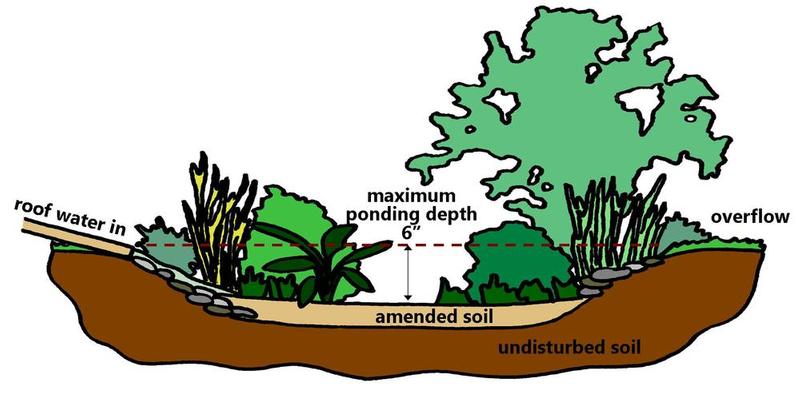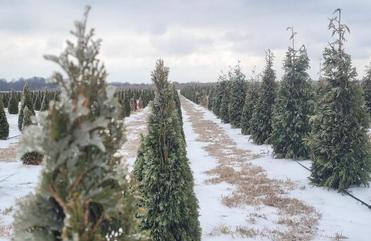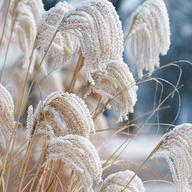5 Great Plants for Rain Gardens
5-Great-Plants-for-Rain-Gardens
Did you know that rainwater runoff contributes to 70% of water pollution? Plants are here to help! A simple installation of a rain garden can remove up to 90% of pollutants from rainwater runoff, not to mention the beauty & biodiversity they provide to the landscape. With rain gardens, everybody wins!

Sustainability is a hot button topic in the green industry, for good reason. The versatility of plants is astounding. If carefully selected plants are planted in the right area, they can play an important roll in the environment while visually delighting gardeners in the process. Rain gardens are one such garden design that serves an important ecological purpose while providing beauty and biodiversity in the landscape. A rain garden is a collection of water-tolerant plants, usually natives, planted on a slightly sloping area to catch rainwater runoff that is displaced by rooftops and pavement. However, do not confuse a rain garden with a water garden or wetland. Rain gardens are designed to have rainwater runoff drain within 12 to 48 hours of the rainfall. Unlike water gardens or wetlands, rain gardens are dry a majority of the time discouraging the nuisance of mosquitoes.

Rainwater runoff accounts for 70% of total water pollution. As rainwater runs off pavement and roofs, it collects fertilizers, pesticides, garbage, bacteria, and other chemicals. By way of rainwater runoff, these pollutants make their way to our water sources. With the help of a properly installed rain garden, 30% more rainwater is retained in the soil. In the process, up to 90% of nutrients & chemicals are removed from rainwater runoff as well as 80% of sediments. It is important to have a landscape that is not only beautiful, but has a high functionality as well. With the size of green spaces and yards shrinking as the population grows and urbanization increases, it is important to utilize the green spaces we do have to the best of our ability. This can be achieved through careful plant selection.
When selecting plants for a rain garden, it is a good rule of thumb to use natives as often as possible, since they are better adapted to utilizing water and nutrients in their native soils. Native plants also have good root systems and generally do not require any fertilizers or pesticides making them more low-maintenance. Rain garden plants are limited to shrubs and perennials. While there are many species of trees that perform well in wet conditions, in a rain garden, trees can be a bit of a water hog, so it is best to stick with shrubs and perennials. Suitable shrubs include: Aesculus parviflora, Aronia, Cephalanthus, Clethra, Cornus (Redtwig Dogwood), Hydrangea ‘Annabelle’, Ilex verticillata, Itea, Myrica pensylvanica, Sambucus, and some Viburnum. Suitable perennials include: Astilbe, Carex, Chelone, Hibiscus, Juncus, Ligularia, Panicum, Pennisetum, Rudbeckia, Schizachyrium, and Sporobolus heterolepis. These lists are not all-inclusive, but they are a good start. Below is a sample plant selection featuring 5 suitable rain garden plants.
1. Aronia Low Scape Hedger™

This is a great selection from Proven Winners®. It is an upright chokeberry that gets about 3-4’ tall. It has little white flowers in April that have a lovely fragrance. As an added bonus, this native shrub has glowing yellow, orange, and red fall color to keep a rain garden looking incredible all year long.
2. Cornus ‘Baileyi’

I chose this redtwig dogwood to add winter interest to the rain garden. This is one of my all time favorite plants. I tried to convince my mother for years to plant one of these shrubs. When I finally convinced her, every time it snowed she would exclaim, "Look how beautiful my dogwood is!" and I would respond with something along the lines of, "I told you so!" The bright red twigs really do illuminate a snowy landscape. This particular cultivar gets about 6-10’ tall adding good height to a rain garden. It has white, fragrant flowers in May and June when the chokeberry is done blooming. Following the flowers are interesting white summer berries that attract birds. This native shrub also attracts butterflies and has good resistance to deer.
3. Sporobolus heterolepis

This is a truly incredible native grass called prairie dropseed. It grows about 2-3’ tall and creates a peaceful rustling sound when the wind blows. Come August, it has airy light pink flowers that stick around through October and are accompanied by a nice yellow and orange fall color. The seed heads have an undeniable and fun popcorn fragrance if you get close enough. Birds love this plant and deer manage to leave it alone.
4. Hibiscus ‘Midnight Marvel’

This hibiscus is not a native plant, however bees, butterflies, and hummingbirds love it so I decided to include it anyways. It gets about 3-4’ tall and has a striking purple foliage, giving a nice contrast to the other green-leafed plants selected. The prominent red flowers are truly a show stopper in July, August, and into September, as they can get up to 10” across. Additionally, this plant is deer resistant.
5. Rudbeckia ‘Goldsturm’

This lovely, little, native perennial is a great performer with long-lasting yellow blooms from July into September. It gets about 2-3’ tall and manages to keep the deer away while attracting an array of bees, butterflies, and birds to the rain garden. It keeps things bright and cheery, even on a rainy day!
While rain gardens perform complex ecological functions, they are relatively easy to install. There are 4 simple steps: select a site, test soil, dig and fill, and finally plant plants.
Selecting a Site
When selecting a site, it is best to choose a location in the landscape with a slight incline, but no more than 12%. Since the idea is to capture rainwater runoff, you want to look for a location that carries water to ditches and drains. The planting design should be longer than it is wide and should be installed perpendicular to the slope in order to capture as much rainwater as possible. The planting bed should be about 20% of the size of the area draining into it. So, if the driveway draining into the garden is about 100 square feet, you would only need a 20 square foot rain garden. Additionally, it is also important to make sure the site selected is at least 10’ away from any house or building on the site to prevent any water damage to the building.
Test Soil
Once a site is selected, the soil needs to be tested to ensure that the location will work for a rain garden. If the soil is very clayey, it will not adequately drain. There are two simple tests that can be performed at home: the infiltration test and the ribbon soil test. These tests can easily be done without any sepcialized tools. The infiltration test consists of digging a small hole about 4” wide and about 12” deep. Fill the hole with water to moisten it before performing the test. Once it has drained, fill it again and use something like a popsicle stick to mark the water level in the hole. Check the water level every hour and record the difference in depth. If the water level drops at least a half inch every hour, the site is suitable for a rain garden. If the water drops less than one fourth of an inch, the site is unsuitable. The ribbon soil test is even simpler. Take a bit of soil from the selected site and add water to it in your hand to create a putty like consistency. Form a ball and hold it between your thumb and forefinger. Press the soil with your thumb into a ribbon and allow it extend past your forefinger. If the ball shatters, the soil is sandy. If the ball forms a ribbon that extends to at least 2” before it breaks, the soil is very clayey making the site unsuitable for a rain garden.
Dig & Fill
Once the perfect site is selected, the real work begins. The top 6-12” inches of soil needs to be tilled and mixed with compost and sand. Some of the tilled soil needs to be removed to create a slight crater for ponding. The maximum ponding depth should be 6”, so it is important to not take out too much soil. The runoff will rush in on one side, and the opposite side of the garden will serve as the overflow as noted in the picture below. It is important to make sure that the overflow is not pointed at the foundation of the house or building on the site as this could cause damage or flooding.

Plant Plants
Now, for the fun part, adding the plants! Any plants mentioned in sections above would be perfect for a rain garden, but there are many more options. A simple google search will result in a multitude of results. Make sure to select plants with staggered blooming times and multiple seasons of interest to make a rain garden with lovely year-round interest. After a year of regular watering, the rain garden plants will be established and require very little maintenance.
For what a rain garden can accomplish, the time and effort to implement one is completely worth it. This is a simple way for anyone to do their part to help reduce pollution, and they get something out of it too: a beautiful garden that supports bees, butterflies, and birds. It’s a win-win for everybody!
If you are interested in a complete list of rain garden shrubs and perennials sold by Home Nursery, contact Chloe at sales@homenursery.com!
Works Cited
“Rain Garden Cross Section.” Anne Arundel County Watershed Stewards Academy, Millersville, MD, aawsa.org/raingardens.
“Rain Gardens.” The Groundwater Foundation, www.groundwater.org/action/home/raingardens-more.html.
“Restoring Local Waterways Rain Gardens.” Anne Arundel County Watershed Stewards Academy, aawsa.org/raingardens/.
“Siting & Sizing.” NEMO Website Link, nemo.uconn.edu/raingardens/sizing.htm.
“Spaight Street.” City of Madison, Madison, WI, www.cityofmadison.com/engineering/stormwater/raingardens/.

